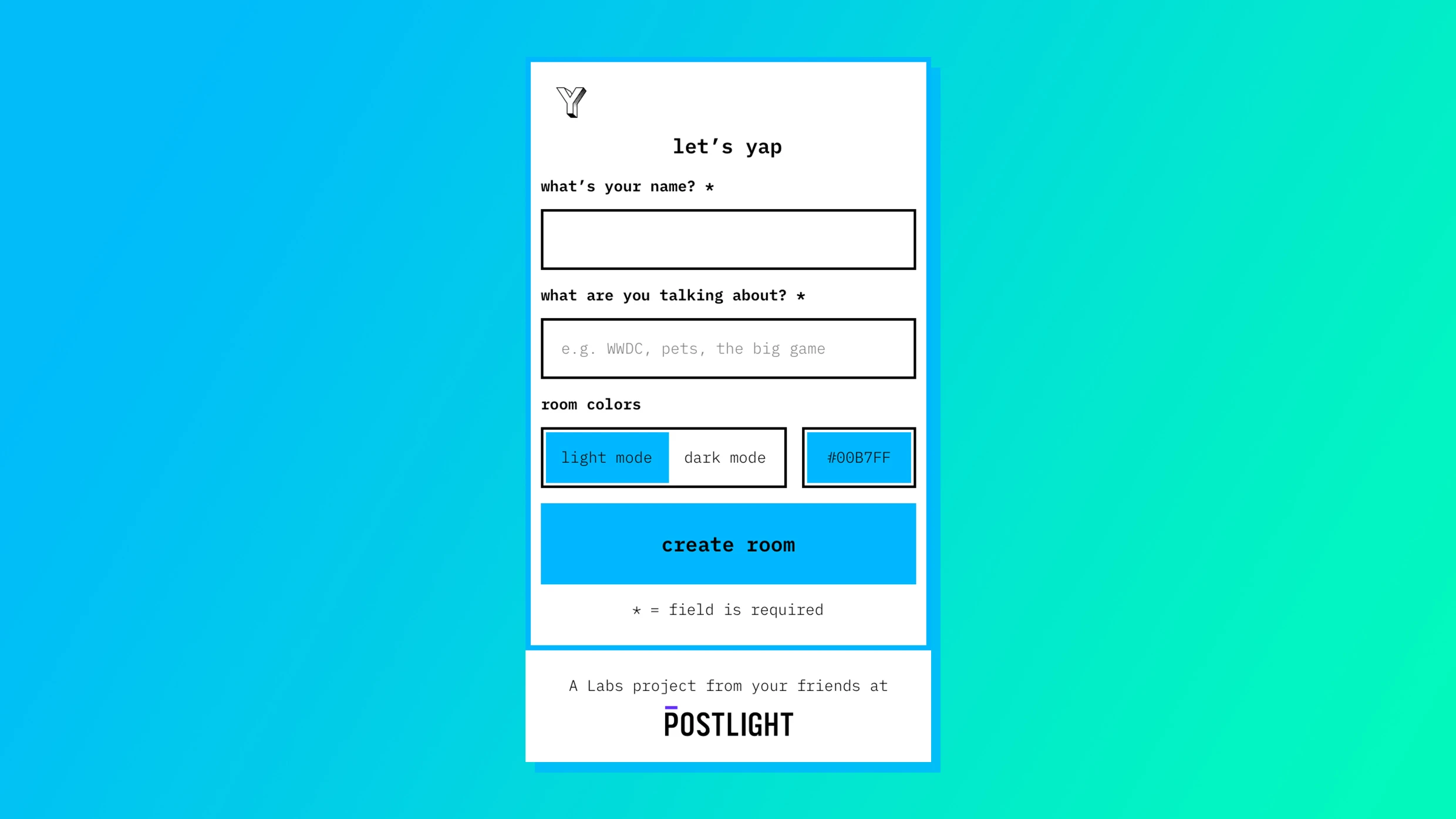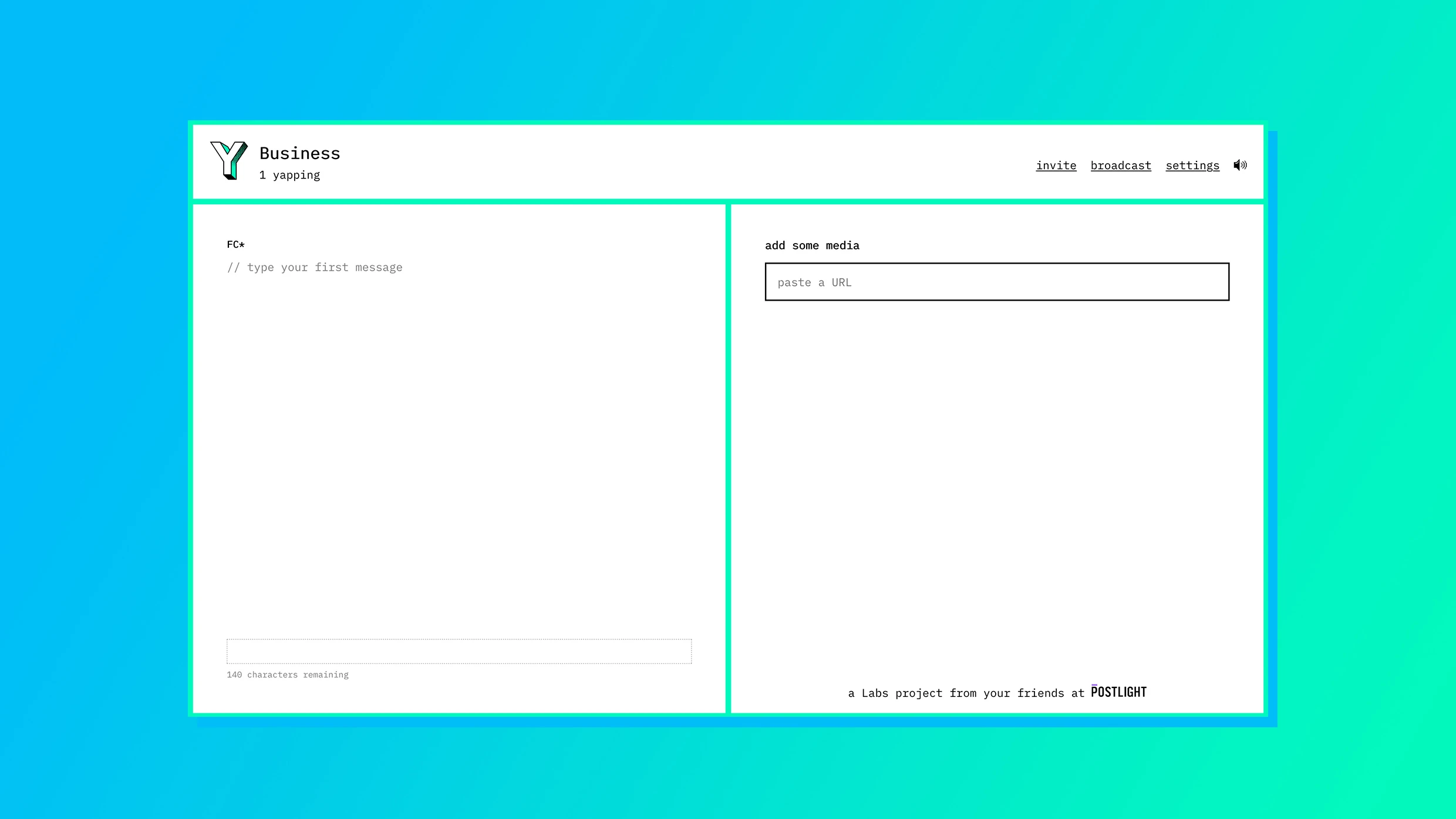In Web 1.0, the internet was known for its static, clunky websites and the rise of widely available information. The user-generated content and constant chatter we know (and get overwhelmed by) today wasn’t a thing until Web 2.0 took over about 10 years later, in the early aughts. But in the years leading up to the new millennium, one element of living online did allow people to engage: the chat room.
Chat rooms have since fallen out of favor, thanks to the popularity of other text-based chat devices and services such as iMessage and Twitter. But a new web-based application from digital product studio Postlight, called Yap, is hoping to restore chat rooms to their humble glory.
“I think everyone’s a little tired of feeling like any time they need a service on the internet that everyone is recording what they say for eternity, or mining their data,” says Adam Pash, Postlight’s director of engineering and head of Labs. “Yap is a place where we don’t do that.”

The real-time chat room, which has no “scroll” feature because messages disappear as soon as they appear (just like real-life conversation!), demands that users live in the moment. “It’s built with ephemerality as the core guiding principle—we don’t save any chat logs, and the chat rooms explode after 24 hours of inactivity,” Pash says. “In the same way you don’t walk into a conversation with friends and say, ‘What were you talking about for the last 20 minutes?,’ you’re not performing for posterity—you’re just having a conversation and a good time.”
Yap, which exists as a sort of digital roundtable, was designed to give people a place to discuss real-time events or media, such as an awards show or a popular YouTube video. Each chat room caps off at six participants, a function of practicality as much as smart programming. “It was largely a component of design; we’ve got a certain amount of space [on the website] and also the cognitive load,” Pash says. “It just feels too noisy and too chaotic to enjoy and take in [otherwise], so it was very much about finding the sweet spot where . . . it feels manageable and not chaotic. Chaos in a small group is because you’ve chosen it; chaos in a large group is because it’s an error.”

The way a Yap chat room begins is simple: someone navigates to the website and shares an invite link with five other people. And while this option is private, users are also able, if they want, to share a broadcast link on social media platforms such as Twitter. This doesn’t allow additional people to join and contribute to the chat room, but it does give outsiders the opportunity to observe it. The chats—which are nontraditional because the messages disappear in seconds, so there is no stored memory to scroll through—are designed with tiny visual and audio features that draw participants’ eyes to new messages in the room.
And within each chat room, the Postlight team has included surprising elements for the user to discover. For example, Pash says, “the text does different things based on the actual behavior. If you start typing really quickly and submitting things really quickly, the text grows larger to convey the excitement of how quickly you’re typing.”
[Image: courtesy Yap]
As for Yap’s website, which was designed by Postlight product designer and strategist Nora Vanni, Pash says she created a platform that embodies the functionality and cheekiness of Yap. “She was looking for a Brutalist web design, harkening back to an earlier time on the web, [where everything was] very text-based and hard around the edges, but feels fun and playful.”
In keeping with Yap’s ability to not take itself too seriously (while being seriously cool), Pash says: “We’re not gathering users, we’re not looking to make a ton of money. It’s made purely in an old web style where we had an idea we thought was really fun and just wanted it out in the world.”
Recognize your brand's excellence by applying to this year's Brands That Matters Awards before the early-rate deadline, May 3.
